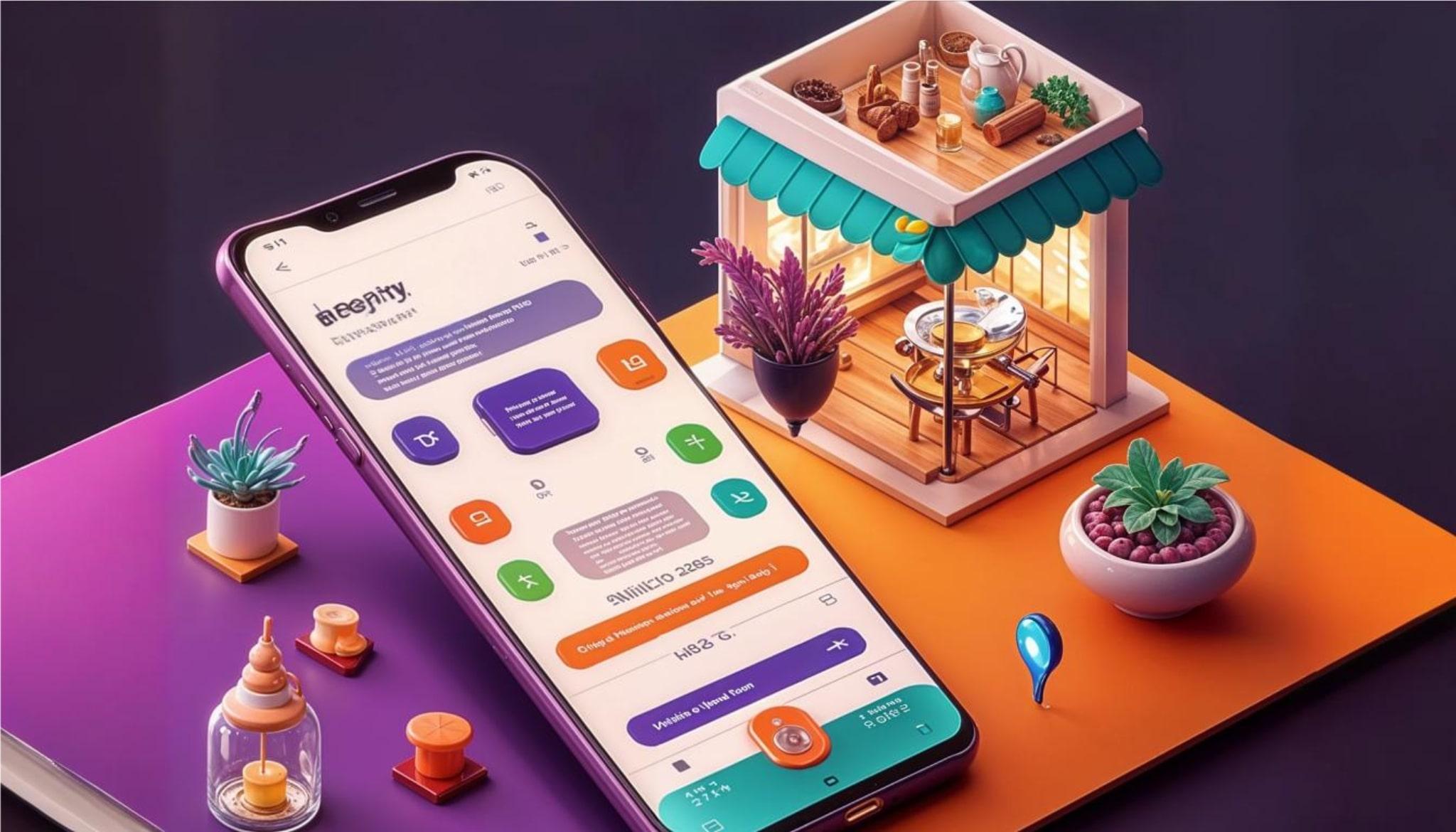In a world around smartphones, restaurants can no longer afford to ignore the power of mobile apps. Customers expect convenience, personalization, and seamless experiences, and a mobile app offers all that right in the palm of their hands. Whether you’re a local café or a multi-location chain, a well-designed mobile app can unlock new growth opportunities and build stronger customer relationships. Restaurant app development is no longer a luxury it’s becoming an essential part of modern restaurant operations and marketing. This step-by-step guide will walk you through the key phases of leveraging a mobile app to grow your restaurant, from understanding customer behavior to launching and optimizing your app.
Why Mobile Apps Are Essential for Restaurant Growth
Consumer Behavior and Mobile Preferences
People are glued to their phones especially when it comes to finding food. According to research, 77% of diners look up a restaurant’s website before they dine, and nearly 90% of them prefer placing orders via a mobile app if the option exists. This is especially true for younger generations like Millennials and Gen Z, who value convenience and speed above all.
Your customers expect to find you, place orders, and book tables all without making a single call. This shift in consumer behavior makes mobile apps a must-have for any restaurant looking to stay relevant. By meeting your customers where they are, you make it easier for them to engage with your brand.
Competitive Advantage in a Saturated Market
The restaurant industry is crowded. With so many options, how do you stand out? A mobile app gives you a direct line to your customers. You can send them promotions, offer loyalty rewards, and even remind them about their favorite dish all without waiting for them to walk through your doors.
Having a restaurant mobile app isn’t just about convenience; it’s about creating an experience that keeps your customers coming back. Early adopters of restaurant app development are not only seeing increased customer loyalty but also higher revenue, thanks to the personalized experience an app provides.
Step-by-Step Process for Leveraging Mobile Apps for Restaurant Growth
Define Your Business Goals and App Objectives
Before you jump into building an app, you need to ask yourself: What do you want this app to achieve? Are you trying to increase delivery orders, boost in-house traffic, or streamline your loyalty program? Knowing your goals will help you define the essential features of your app.
For example, if your main objective is to boost takeout orders, then a streamlined mobile ordering feature should be your top priority. If you’re more focused on building long-term customer loyalty, then the app should heavily emphasize rewards and personalized offers. Aligning your app’s features with your restaurant’s goals is the key to creating an effective mobile experience.
Understand Your Target Audience
Not all customers have the same needs. Younger diners might want a fast, no-fuss experience with mobile payments, while older customers may appreciate loyalty programs and in-app reservation systems. To build an app that truly resonates with your audience, you need to understand their preferences and behavior.
Take the time to research your customer base: What are their favorite dishes? Do they typically order delivery or dine in? Are they active on social media? Knowing these insights helps you design an app that meets their needs and encourages engagement.
Choose Essential Features to Include
Online Ordering and Payment Integration
One of the main reasons customers download restaurant apps is to make ordering easier. Online ordering is a must-have feature for any restaurant app. But don’t stop there add mobile payment integration to make the process seamless. Let your customers place their order, pay, and even tip all within the app.
Online ordering can significantly boost sales by making it convenient for customers to order from anywhere. Mobile payments also increase checkout speed, ensuring that customers don’t drop out at the last minute because of a complex payment process.
Loyalty Programs and Personalized Offers
Loyalty programs keep customers coming back, and a mobile app is the perfect platform to manage one. Through your app, you can offer rewards like points for each order, birthday discounts, or even special access to new menu items. The best part? You can personalize these offers based on the customer’s previous orders.
Personalization is the secret sauce to making your customers feel valued. When your app recommends dishes they’ve enjoyed before or sends them a surprise discount, it creates a sense of connection. This is how you turn first-time visitors into repeat customers.
Push Notifications for Real-Time Engagement
Push notifications are a powerful marketing tool. You can use them to announce daily specials, limited-time offers, or remind customers of their abandoned orders. Imagine sending a “Lunch special today only 10% off all burgers!” notification just before noon. It’s a great way to boost sales during slow hours.
But beware of overusing push notifications. You want to provide value without being annoying. Targeted, relevant messages based on user behavior will keep customers engaged without driving them away.
Reservation and Waitlist Management
Incorporating reservation and waitlist management into your app makes it easier for customers to book a table without the hassle of phone calls. They can check real-time availability and add themselves to a waitlist if necessary. This feature streamlines the process for both the customer and your staff, improving the overall dining experience.
Design and Development Considerations
Now that you know what your app needs to do, it’s time to build it. The design and development phase is critical to creating a successful app. You’ll need to work with a professional developer, potentially a startup app development team, to create a seamless, branded app that’s easy to use.
Your app’s interface should be intuitive, offering quick access to ordering, loyalty programs, and reservations. Branding is just as important—the colors, fonts, and design elements should align with your restaurant’s identity, offering a consistent experience whether customers are online or in-store.
Launch and Market Your App
Pre-Launch Marketing and App Awareness
Before your app goes live, you should start building excitement. Use your social media channels, website, and even in-store signage to let customers know an app is coming soon. Create a buzz by offering early access to your most loyal customers or giving exclusive rewards to the first 100 people who download the app.
Marketing your app effectively from the start is crucial for its success. The more people know about your app before it launches, the higher your initial downloads and engagement will be.
Post-Launch Promotions and Incentives
Once your app is live, offer incentives to drive downloads and usage. App-only discounts, loyalty points for the first purchase, or exclusive menu items can encourage more customers to engage with your app. These promotions will keep customers exploring all that your app has to offer and drive higher order volumes right from the start.
Continuously Monitor Performance and Optimize
Your work doesn’t end once your app is live. You need to continuously track its performance, monitor user behavior, and gather feedback. Look at the app’s analytics to see which features customers are using most, and which may need improvement. Are push notifications driving traffic? Are people ordering more through the app?
Gather user feedback through app reviews and in-store conversations, then make regular updates to keep improving. Whether it’s adding a new feature, improving navigation, or tweaking loyalty rewards, continuous optimization ensures your app remains relevant and valuable to your customers.
The Role of Mobile Apps in Scaling Restaurant Businesses
Mobile apps do more than just improve customer experience they can also help scale your operations. For example, restaurants with delivery services can use apps to expand their reach beyond walk-in customers. By offering mobile ordering, delivery, and even virtual kitchens, restaurants can serve a much wider audience without adding significant overhead.
For multi-location chains, mobile apps simplify the process of managing customer interactions across multiple venues. Customers can place orders for any location, use loyalty points wherever they go, and stay connected with your brand. Apps are the key to expanding both your customer base and your revenue streams.
Why Restaurant App Development is the Future of Marketing and Growth
The restaurant landscape is changing, and digital solutions are leading the charge. Mobile apps are the future of restaurant marketing, offering personalized engagement, convenience, and opportunities for growth. Whether it’s pushing out limited-time offers, making ordering effortless, or rewarding loyal customers, mobile apps provide the tools you need to drive growth and stay competitive.
Restaurant app development is no longer optional; it’s essential. Restaurants that invest in creating a well-designed, user-friendly app will be the ones that thrive in the years ahead.
Conclusion
Building and leveraging a mobile app is one of the most powerful strategies to grow your restaurant business. By following the steps outlined in this guide defining goals, understanding your audience, integrating the right features, and continuously optimizing you can use your app to drive sustained growth, improve customer loyalty, and stand out in a competitive market.
Now is the time to take action. Partner with a development team and start planning your restaurant’s app today to stay ahead of the competition and meet the demands of your mobile-first customers.





